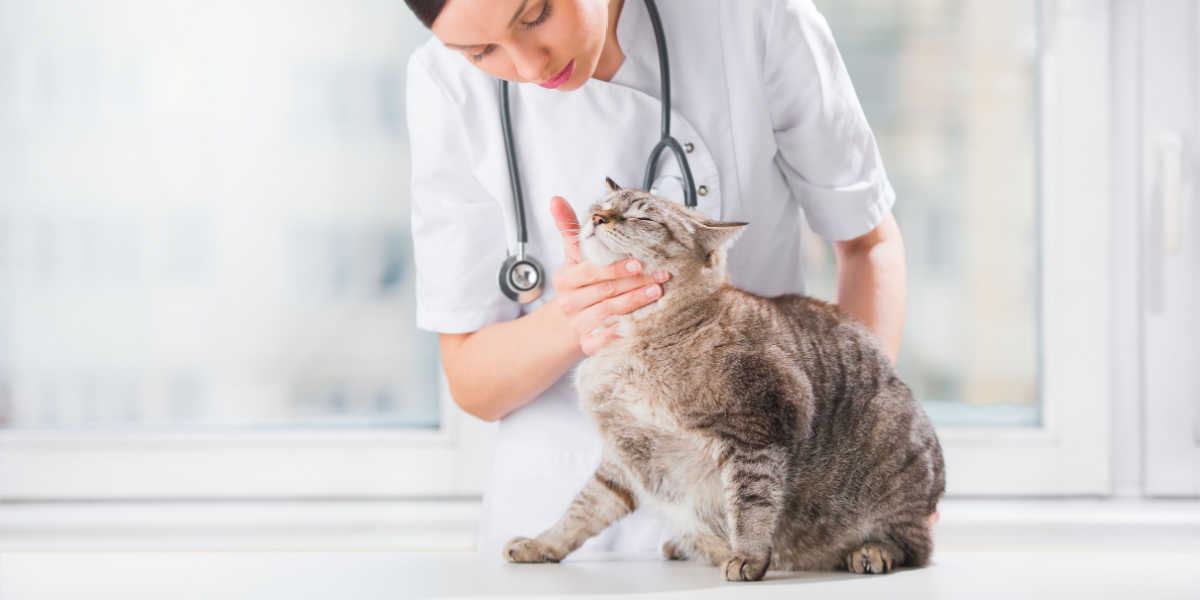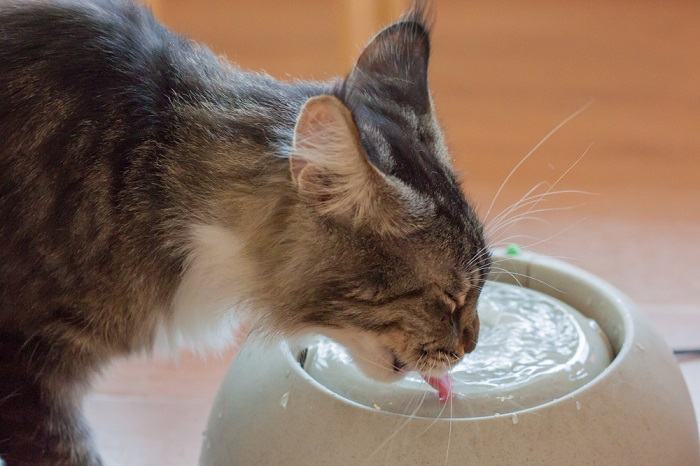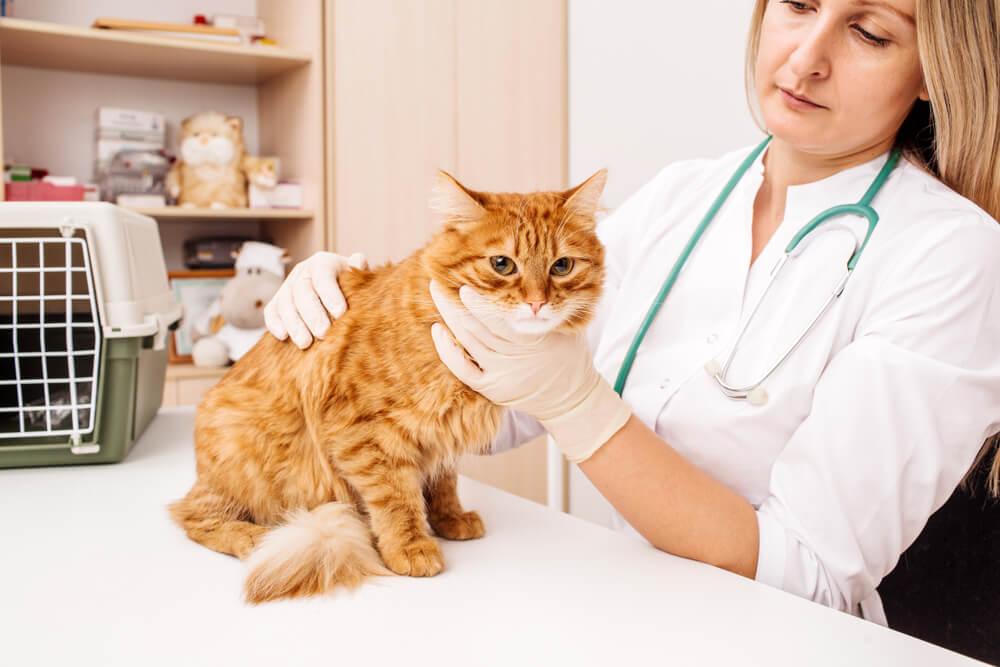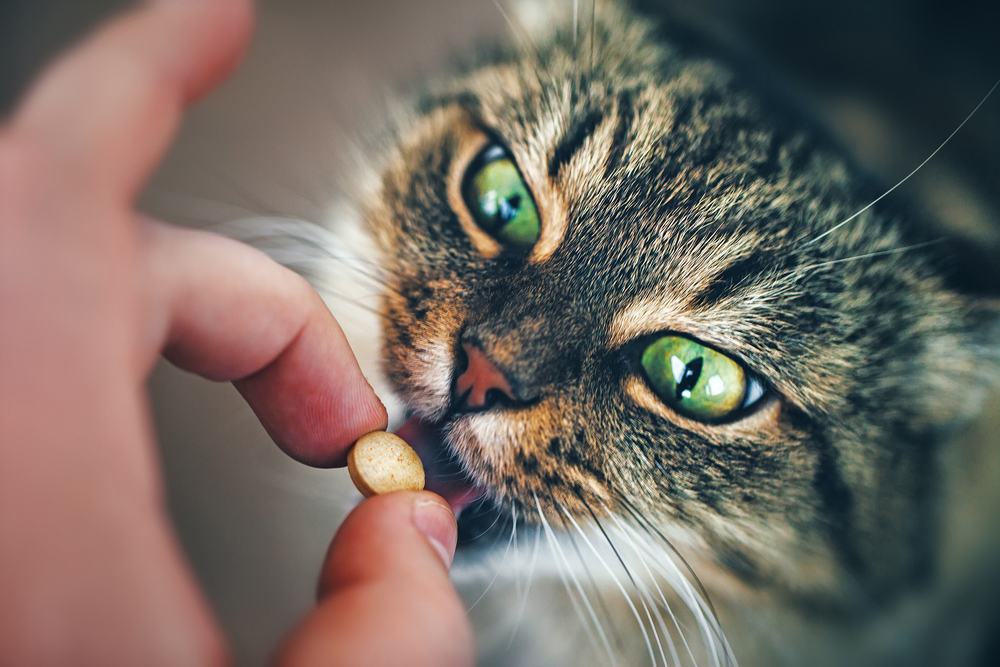
Protozoal infections are caused when a cat becomes infected with protozoa—microscopic single-celled organisms. The term “protozoal infection” is used in the same way as bacterial infection (caused by bacteria) and viral infection (caused by viruses). Protozoa are regarded as parasitic infections, and their life cycles are described in parasitology textbooks. Protozoa have a nucleus with a membrane, while bacteria and viruses do not have this.
Quick Overview: Protozoan Infections in Cats







Also Read: Bacterial Infections In Cats: Causes, Symptoms, & Treatment
What Are Protozoa?
Protozoan infections in cats are diagnosed regularly by veterinarians around the world, with the incidence varying largely depending on the geographical location. Some (such as Giardia) are common while others are very rare. There are around 35 phyla (broad groups of protozoa) and a very high number of different species. However, only a small number of protozoal species infect cats.
Protozoa have some distinct characteristics that are different from bacteria, viruses, yeasts, and other parasites that make them challenging organisms to deal with in cats:
- They can form resistant life stages
- They sometimes use vectors (other animals) as a way to infect cats
- They can swap genetic material through sexual union which allows them to carry out a type of “shape changing,” so they can be more difficult to kill
A number of protozoa can infect cats, with each causing different types of signs of illness. The most common protozoa are:
- Giardia spp including Giardia felis and Giardia duodenalis
- Tritrichomonas foetus
- Cryptosporidium parvum and C. felis, causing cryptosporidiosis
- Cystoisospora (previously known as Isospora) causing coccidiosis
- Hammondia heydorni
- Toxoplasma gondii (T. gondii)
- Leishmania, causing Leishmaniasis, transmitted by sand flies
- Trypanosoma
- Cytauxzoan felis (C. felis)
- Babesia
- Sarcocystis
- Neosporum canis
Also Read: Cat Intestinal Parasites: Causes, Symptoms, & Treatment
Causes of Protozoal Infections in Cats

Cats living in the same household can pass certain protozoal infections to each other when they share food and water bowls, or litter boxes.
Protozoa are passed on to cats in one of four ways:
-
Direct cat-to-cat contact. In this form of transmission, the infectious stage of the parasite is not resistant to environmental extremes and will die rapidly if it leaves the cat’s body (e.g., in food bowl, water bowl, or bedding). It can only spread by one cat passing it directly to another cat. One example is Trichomonas felistomae, which is parasite of the mouth of the cat.
-
Contact with resistant stages in the environment. This is how cats are infected with a number of common protozoa, including Giardia, Cryptosporidium, Isospora, and in some cases of Toxoplasma gondii. These protozoa have a resistant stage (a sporulated oocyst), where the organism is enclosed inside a thick protective wall that allows them to survive in adverse environments for months or years.
-
Ingestion of animals that contain resistant stages. The process starts by another infected cat shedding a resistant stage (oocysts) of the protozoa into the environment in cat feces. The protozoa is then eaten by a different animal host (such as a mouse) and the host’s body then protects the protozoa from the environment, allowing them to survive as cysts in the mouse’s tissues for months or years, until the mouse is eaten by a cat, which then becomes infected. This is how cats pick up Sarcocystis, Hammondia heydorni, Toxoplasma gondii, and sometimes Isospora.
-
Transmission by an arthropod vector that feeds on cat blood. This is how cats typically become infected with Leishmania, Trypanosoma, Cytauxzoan, and Babesia. The arthropod (a tick, flea, or mosquito) sucks blood from one cat, then transmits this to the next cat that they feed on.
Also Read: 10 Subtle Signs Your Cat May Be Sick
Symptoms of Protozoal Infections in Cats

Digestive upset like diarrhea is common with many protozoal infections, but different organisms cause a variety of different symptoms.
Each different protozoa causes a different type of illness, although some cause similar types of issues. It is therefore impossible to generalize about the symptoms of all protozoal infections.
-
Giardia felis, Cryptosporidium parvum, and Tritrichomonas foetus are intestinal parasites, affecting the small intestine of dogs and cats in particular. Many cats show no signs of infection at all, but in cats where there are issues, gastrointestinal signs, and in particular, chronic diarrhea is the main sign. Younger cats are more likely to be infected and more likely to show signs of illness. Adult cats are more likely to be able to control the infection naturally via their immune response. Giardiasis is more common in high-density populations (shelters, catteries or multi-cat households are risk factors).
-
Cystoisospora (previously known as Isospora) causes coccidiosis, which can cause diarrhea, blood in the feces, dehydration, lethargy, weight loss, vomiting, abdominal pain, pale gums, and inappetence.
-
Toxoplasma gondii causes toxoplasmosis, with a wide range of signs including fever, depression, lethargy, difficulty breathing, muscle pain, stiffness, abnormal gait, ataxia (lack of coordination), paresis (weakness), stumbling, abdominal pain, seizures, blindness, lymphadenopathy (enlarged lymph nodes), and skin lesions (nodules or ulcers).
-
Babesia organisms are primarily passed through tick bites, with the organism destroying red blood cells and platelets, causing signs of anemia, as well as sometimes causing a systemic inflammatory response to the organism, leading to multi-organ failure and generalized illness.
-
Leishmania causes Leishmaniasis, which can present in different ways, including skin lesions and generalised disease.
-
Trypanosoma causes trypanosomosis, spread by insects, a condition which is exceptionally rare in cats and only seen with a significant prevalence in specific regions (e.g. south America and southern Africa). Infection may be asymptomatic in cats but the illness is zoonotic, and cats may be carriers in some instances.
-
Cytauxzoan, passed on by ticks, can cause fever, icterus (jaundice), and pancytopenia, especially in the tick season (spring and summer months). This is exceptionally rare, only occurring in certain specific regions.
-
Sarcocystis is also exceptionally rare, but it can cause lethargy, dull mentation, fever, dyspnea, coughing, seizures, circling, ataxia, spinal pain, muscle pain, and anisocoria (different sized pupils in the eye).
Also Read: 11 Signs That You Need to Get Your Cat To the Emergency Room
Diagnosis of Protozoal Infections

If your cat is showing symptoms of a protozoal infection, your vet will recommend running specific tests.
Your veterinarian will physically check your cat carefully all over. This is a central part of good veterinary medicine. The exam will include an inspection of the mouth and teeth, careful palpation of the abdomen, listening to the chest and abdomen with the stethoscope, and an inspection of the anal area.
Occasionally, the nature of the trace of feces on the thermometer might be inspected after the cat’s temperature has been taken (in some protozoan infections, mucus, jelly, and traces of blood might be seen). Characterization of the type of diarrhea is an important part of understanding the type of disease.
Your vet will discuss every aspect of your cat’s condition and overall health care, looking for clues about why your pet is unwell, and in particular, if diarrhea is the issue, finding out about anything that might affect the digestive system. This will include asking about your pet’s vaccination status, dietary history (including any supplements given), parasite control program, contact with other cats, and toileting habits.
If your veterinarian suspects that your cat might have a protozoal infection, they might recommend taking the following steps:
Blood Tests, Urinalysis, and Fecal Analysis
It’s very likely that your veterinarian might carry out blood work, including the usual panel of diagnostic tests, such as hematology (complete blood count with assessment of blood cells including red blood cells and white blood cells) and biochemistry profiles. In protozoal infections, typically there might not be many abnormalities, although electrolyte imbalances might be identified.
Importantly, other causes of the same types of signs of illness will be ruled out (such as liver disease, kidney disease, pancreatitis, feline infectious peritonitis, etc.) because the blood parameters reflecting these areas of the body will usually be normal indicating that your cat’s health is generally good.
- Blood tests are also useful to assess your cat’s level of hydration, which is important as dehydration is common in cases of diarrhea.
- Some specific tests may be carried out (e.g., folate and Vitamin B12 or cobalamin) as abnormalities in these factors can affect digestive function.
- The thyroid hormone level might be assessed, as hyperthyroidism can cause signs of diarrhea that mimic some protozoan infections.
- Urinalysis will be carried out as with many other sick cats, as part of a general investigation.
- Fecal samples might be submitted for standard fecal flotation and examination, and stained cytology for protozoa, other parasites (such as roundworms) and bacteria, as well as checking for abnormal blood cells. Isolates of some protozoa might be clearly identified in this way.
- Analysis of feces using PCR assay, IFA, or ELISA tests to detect antigens or antibodies are often the way that a definitive diagnosis of a protozoal infection can be made.
Your veterinarian may recommend specific blood tests for some viral infections such as feline leukemia virus (FeLV) and feline immunodeficiency virus (FIV), since these can affect the immune system, leading to an increased susceptibility to protozoal infections. There are significant implications if your cat is positive for either of these.
Other Tests
- Radiographs (x-rays) might be taken of the abdomen to check for other causes of the signs shown by your cat.
- Ultrasound can be a useful way of assessing the structure of abdominal organs, again making sure that everything else is normal.
- Blood pressure measurement might be carried out to assess your cat’s general health.
- Endoscopy might be recommended to view the internal structure of the mucosal lining of your cat’s colon, and in some cases, to take a biopsy to make a definitive diagnosis of the type of protozoan infections by examining the structure of the intestinal wall under the microscope.
Also Read: Top 10 Things Your Vet Wishes You Knew
Treatment of Protozoal Infections

Treatment of protozoal infections often requires specific medication, in conjunction with a nutritious diet and supportive care.
The precise treatment of a protozoal infection depends on the specific protozoan involved. Mild cases of protozoal infections might be given a general treatment for GI tract disease without full investigations as listed above. This may include a low-residue, highly-digestible diet, with instructions to feed it until the cat’s stools are firm. Adding fiber to the diet might improve clinical signs.
As well as this general approach, for Giardia infection, the following medications may be used:
- Fenbendazole
- Metronidazole
- Febantel
- Furazolidone
- Quinacrine
- Secnidazole
Routine cleanliness and litterbox hygiene is important to avoid spread of Giardiasis as well as reinfection of recovering patients, using disinfectants recommended by your veterinarian.
In stubborn cases, fecal transplants might be suggested to restore a normal digestive tract microbiome. This uses healthy feces from a donor which are given orally or rectally.
Treatment options for toxoplasmosis include prescription antibiotics, specifically clindamycin and trimethoprim-sulfonamide, and/or the anti-parasitic drug pyrimethamine.
Treatment for babesiosis might involve specific prescription drugs, including primaquine phosphate, imidocarb dipropionate, or diminazene aceturate.
For the treatment of leishmaniasis, allopurinol or meglumine antimoniate (N-methylglucamine antimoniate, MGA) might be recommended.
For all of these illnesses, follow the advice of your veterinarian as to which treatment is most appropriate for your cat.
Also Read: 10 Most Dangerous Diseases In Cats
Monitoring and Prognosis

Contact your veterinarian immediately if your cat’s symptoms come back after a course of treatment.
Your veterinarian will advise you on what followup care is needed, but in general, monitoring your cat at home for recurrence of any of the signs of illness is the main way to confirm that a full recovery is underway. With appropriate treatment, the prognosis for most cases of protozoal infections is good.
Protozoan infections can cause a range of different types of diseases, and if they are suspected, prompt veterinary intervention is important.
Also Read: Systemic Fungal Infections In Cats: Causes, Symptoms, and Treatment
Frequently Asked Questions
How do you get rid of protozoa in cats?
The precise treatment depends on the specific type of protozoal infection, but in every case, detailed advice from the veterinarian treating your cat is needed.
What are the symptoms of a protozoan infection?
Different types of protozoa cause different signs, and these can range from digestive disease (primarily diarrhea, with Giardia and Coccidia types of infections), to generalized disease affecting muscles and nerve tissues (toxoplasmosis), to blood disease (babesiosis) to other rarer manifestations.
What is an example of a protozoal infection?
The three best known examples are giardiasis or coccidiosis (causing digestive disease), Toxoplasmosis (causing generalized disease) and babesiosis (causing blood disease).
How do you treat protozoal infections?
The treatment depends on the type of protozoal infection, but it usually involves daily medication prescribed by your veterinarian.







